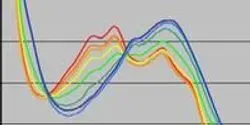Document

Phenomenex Inc., a global leader in the research and manufacture of advanced technologies for the separation sciences, announces the publication of a new sample preparation guide and selection tool to help scientists produce cleaner samples for more efficient chromatographic analysis.

Genevac, a world leader in solvent removal technologies, has released a new 24-page guide ‘Introduction to Evaporation.’

Abstract: Persistent organic pollutants (POPs) can cause long term damage to the environment. Two classes of organic molecules have come to the attention of regulators and water treatment authorities in recent years; iodinated X-Ray contrast media (XCM) and artificial sweeteners (AS). These molecules, by design, have a high degree of stability. Aware of the increased abundance of these molecules in waste water, the IWB Water Laboratory set out to develop a robust, simple method to analyse levels of these molecules in water from the river Rhine, ground water and drinking water.

A problem that has gone relatively unnoticed when achieving reliable measurements is that of transpiration. Transpiration is defined as the passage of vapor from within a container to the outside. Transpiration is a systematic error that increases the concentration of a solution as time passes.

Rapidly growing firm ditches paper notebooks to boost collaboration, traceability and quality of data.

Freeman Technology has published a new white paper that describes extensive experimental studies examining the multiple mechanisms that lead to powder caking. Caking is a routinely encountered problem within powder handling applications which compromises productivity and increases waste.

Thermo Fisher Scientific has developed an ion chromatography method with suppressed conductivity detection for sensitive determination of inorganic anions and carboxylic acids (fluoride, acetate, formate, mesylate, chloride, nitrate, succinate, malonate, sulfate, and oxalate) in airborne particulate matter (PM2.5).













